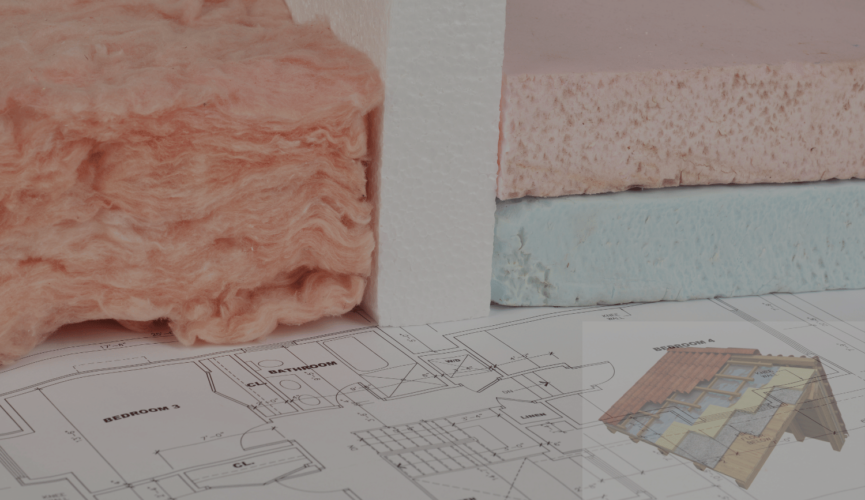Types of Insulation: The Key to Energy Efficiency
When it comes to keeping your home comfortable and energy-efficient, insulation plays a crucial role. Proper insulation helps regulate indoor temperatures, reduces energy costs, and enhances overall comfort levels. With various types of insulation available on the market, understanding their differences can help you make an informed decision for your home’s needs. In this article, we’ll explore the most common types of insulation, including the increasingly popular spray foam insulation.
Fiberglass Insulation
Fiberglass insulation is one of the most widely used and affordable options for residential and commercial buildings. Made from fine glass fibers, it comes in batts or rolls that can be easily installed in walls, attics, and crawl spaces. Fiberglass insulation is effective at trapping air and slowing down heat transfer, making it a good choice for temperature regulation. However, it can be prone to settling over time, potentially creating gaps and reducing its insulating capabilities.
Cellulose Insulation
Cellulose insulation is an eco-friendly option made from recycled materials like newspapers, cardboard, and other plant fibers. It is typically blown or sprayed into attics, walls, and other enclosed spaces, providing excellent insulating properties and air-sealing capabilities. Cellulose insulation is resistant to moisture, fire, and pests, making it a durable and long-lasting choice. Additionally, its natural composition makes it a great option for homeowners looking to reduce their environmental impact.
Mineral Wool Insulation
Mineral wool insulation, also known as rock wool or slag wool, is made from natural minerals like basalt or recycled steel slag. It comes in batts or loose-fill form and is known for its excellent fire resistance and sound absorption properties. Mineral wool insulation is also resistant to moisture and mold, making it a suitable choice for areas with high humidity levels. However, it can be more expensive than other types of insulation and may require professional installation due to its density.
Rigid Foam Insulation
Rigid foam insulation is a versatile option that comes in various forms, including rigid boards, sprayed foam, and insulating concrete forms (ICFs). These types of insulation are highly effective at preventing heat transfer and can be used in various applications, such as exterior walls, roofs, and foundations. Rigid foam insulation is moisture-resistant, durable, and long-lasting, making it a popular choice for both new construction and retrofit projects.
Spray Foam Insulation
Spray foam insulation has gained significant popularity in recent years due to its exceptional insulating properties and air-sealing capabilities. It is available in two main types: open-cell and closed-cell spray foam.
Open-cell spray foam insulation
Open-cell spray foam insulation is a lightweight, semi-rigid material that expands to fill cavities and crevices, creating an effective air barrier. It is known for its excellent insulating properties and ability to reduce air infiltration, making it a great choice for improving energy efficiency in existing homes.
Closed-cell spray foam insulation
Closed-cell spray foam insulation, on the other hand, is denser and more rigid. It provides superior insulation and moisture resistance, making it ideal for use in areas prone to high humidity or moisture exposure, such as crawl spaces and basements. Closed-cell spray foam also has a higher R-value (a measure of insulation effectiveness) compared to open-cell foam, making it a more efficient insulator.
Application process for spray foam
The application process for spray foam insulation involves hiring a professional contractor who will spray the foam onto the desired surfaces, ensuring proper coverage and adherence. The foam expands and hardens, creating a seamless and continuous insulation layer that effectively seals air leaks and minimizes heat transfer.
Reflective Insulation
Reflective insulation is a unique type of insulation that reflects radiant heat rather than absorbing it. It consists of reflective materials, such as aluminum foil or metalized plastic film, often combined with plastic bubbles or cardboard backing. Reflective insulation is commonly used in attics, walls, and crawl spaces to reduce heat transfer and improve energy efficiency. It works best when installed with an adjacent air space, allowing the reflective surface to bounce radiant heat back towards its source.
When considering the right type of insulation for your home, it’s essential to consider factors such as climate, insulation requirements, budget, and the specific areas of your home that need insulation. Consulting with a professional insulation contractor can help you determine the most suitable option based on your needs and local building codes.
Energy efficiency
Proper insulation not only improves energy efficiency and lowers utility bills but also contributes to a more comfortable living environment. By understanding the different types of insulation and their unique characteristics, you can make an informed decision that maximizes the energy performance and overall comfort of your home.

